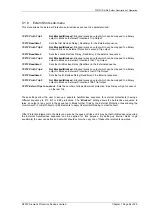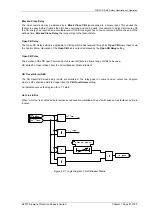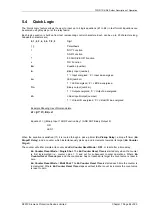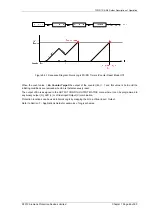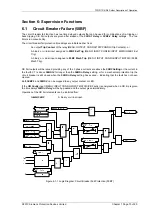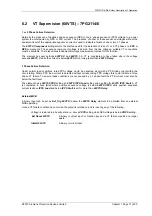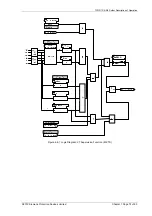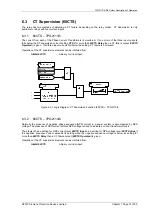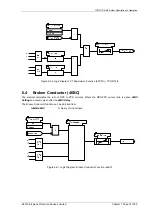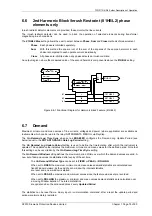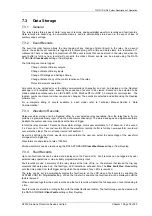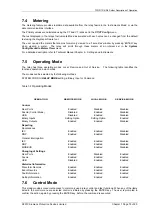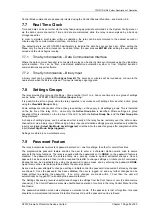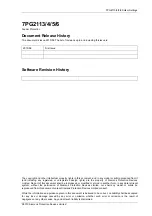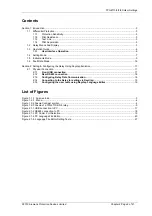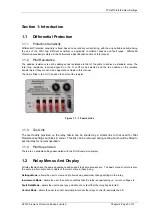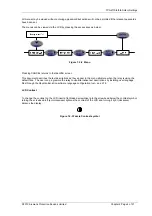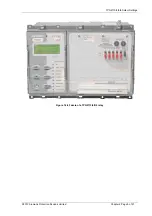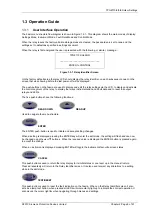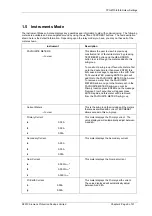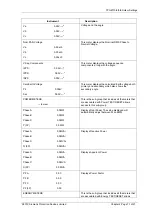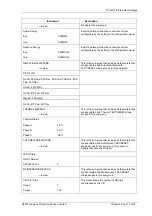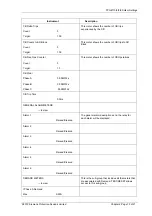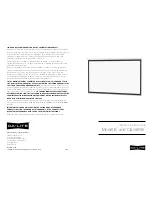
7PG2113/4/5/6 Solkor Description of Operation
7.3
Data Storage
7.3.1 General
The relay stores three types of data: relay event records, analogue/digital waveform records and fault records.
Data records are backed up in non-volatile memory and are permanently stored even in the event of loss of
auxiliary supply voltage.
7.3.2 Event Records
The event recorder feature allows the time tagging of any change of state (Event) in the relay. As an event
occurs, the actual event condition is logged as a record along with a time and date stamp to a resolution of 1
millisecond. There is capacity for a maximum of 1000 event records that can be stored in the relay and when the
event buffer is full any new record will over-write the oldest. Stored events can be erased using the DATA
STORAGE>
Clear Events
setting or from Reydisp.
The following events are logged:
Change of state of Binary outputs.
Change of state of Binary inputs.
Change of Settings and Settings Group.
Change of state of any of the control functions of the relay.
Protection element operation.
All events can be uploaded over the data communications channel(s) and can be displayed in the ‘Reydisp’
package in chronological order, allowing the sequence of events to be viewed. Events can be selected to be
made available spontaneously to an IEC 60870-5-103, Modbus RTU or DNP 3.0 compliant control system. The
function number and event number can also be changed. The events are selected and edited using the Reydisp
software tool.
For a complete listing of events available in each model, refer to Technical Manual Section 4 ‘Data
Communication’.
7.3.3 Waveform Records.
Relay waveform storage can be triggered either by user selected relay operations, from the relay fascia, from a
suitably programmed binary input or via the data comms channel(s). The stored analogue and digital waveforms
illustrate the system and relay conditions at the time of trigger.
In total the relay provides 10 seconds of waveform storage, this is user selectable to 1 x 10second, 2 x 5 second,
5 x 2 second or 10 x 1 second records. When the waveform recorder buffer is full any new waveform record will
over-write the oldest. The most recent record is Waveform 1.
As well as defining the stored waveform record duration the user can select the percentage of the waveform
storage prior to triggering.
Waveforms are sampled at a rate of 1600Hz.
Stored waveforms can be erased using the DATA STORAGE>
Clear Waveforms
setting or from Reydisp.
7.3.4 Fault Records
Up to ten fault records can be stored and displayed on the Fascia LCD. Fault records can be triggered by user
selected relay operations or via a suitably programmed binary input.
Fault records provide a summary of the relay status at the time of trip, i.e. the element that issued the trip, any
elements that were picked up, the fault type, LED indications, date and time. The
Max Fault Rec. Time
setting
sets the time period from fault trigger during which the operation of any LEDs is recorded.
The relay can be set to automatically display the fault record on the LCD when a fault occurs by enabling the
SYSTEM CONFIG>
Trip Alert
setting. When the trip alert is enabled the fault record will be displayed until the
fault is removed.
When examined together the event records and the fault records will detail the full sequence of events leading to
a trip.
Fault records are stored in a rolling buffer, with the oldest faults overwritten. The fault storage can be cleared with
the DATA STORAGE>
Clear Faults
setting or from Reydisp.
©2010 Siemens Protection Devices Limited Chapter 1 Page 78 of 80

